If you’re looking for unique kitchen utensils and plan on utilizing All-Clad, you’ve yet made a fantastic selection. They are nicely famous for producing the most elevated grade, considerably long-lasting, and soundest kitchen utensils that may purchase, and they have existed doing so for decades. But currently, the query is: what is the difference between All Clad D3 and D5?
Must I purchase the D3 collection (also named Tri-Ply) or the D5 collection?
The fundamental distinction between All-Clad D3 and D5 is that D3 has 3 bonded layers, while D5 has 5. The D3 heat retention is up quickly and is better responsive, while the D5 heat retention is up additional evenly and additionally soft. Because of the additional coatings, D5 is additionally costly.
This is a quick explanation, but there is considerably better to learn before choosing which collection is good for you. In this detailed All-Clad D3 vs. D5 comparison, you’ll learn how the 2 kitchen utensils collections are alike, how they differentiate, and what those distinctions mean.
You’ll find out how they match in terms of cooking performance, styling, commodity options, cost, and more additional. By the end, you will have all the details you require to determine which All-Clad kitchen utensils are good for you. Let’s dive in now!
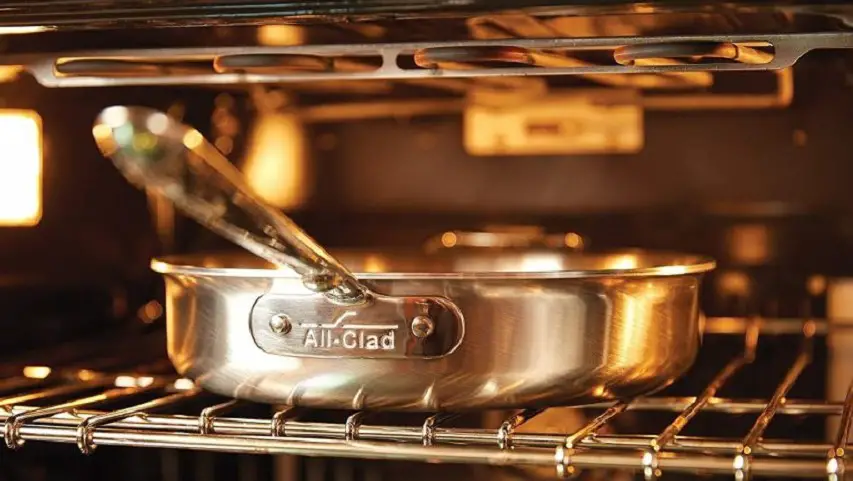
America’s Test Kitchen recommends the All-Clad D5 kit
Since 1967, when John Ulam (who subsequently established the All-Clad corporation) was testing with metals, it was discovered that alloying them was not the most suitable production method.
The stainless steel cooking surface was shiny, strong, and long-lasting – all eligible qualities.
But this did not correspond to the thermal conductivity of aluminum (or copper).
Copper and aluminum were fine conductors of warmth, but their pots were short-lived.
In its laboratory, Ulam accidentally found a production technology that would transform the game permanently while it was constructing a little jar for house utilize.
The whole problem is not how the organization was based, but the choice between the D3 (also called three-layer) cookware stripes or the All-Clad D5 cookware line. In this article, we’ll take a peek at what both commodity lines look like and what kit them aside.
Isn’t it amusing that they have so greatly in typical that we require a manual to tell them asunder?
They differentiate in productivity, cost, the digit of things per kit, and format.
By the rear of this article, it will become obvious why the majority of buyers choose the D3.
Reference: we are talking against a coating of aluminum.
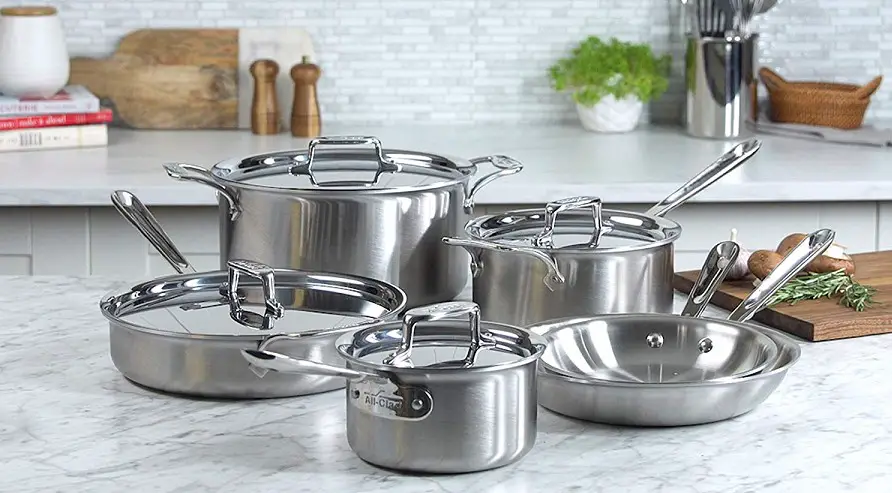
A bit of narrative
All-Clad kitchen utensils are deemed 1 of the finest in the cookware industry.
All-Clad started operations in Pennsylvania in 1971, when metallurgist John Ulam was capable to make tableware utilizing metal bonding technology.
This innovative product led to All-Clad’s standing for increased-quality stainless steel pans and pots, which persists to this daytime.
The All-Clad D3 and D5 kitchen utensils are two of the most popular lines.
I have found the All-Clad D5 range to have slightly better performance and ease of maintenance. But the much higher price makes it out of reach for many.
The D3 gives you almost all the benefits of layered cookware, but it doesn’t have the same heat distribution and strength as the D5 set. There are various factors to consider.
When it comes to All-Clad D3 or D5 cookware sets, which one is right for you? Read on to find out more.
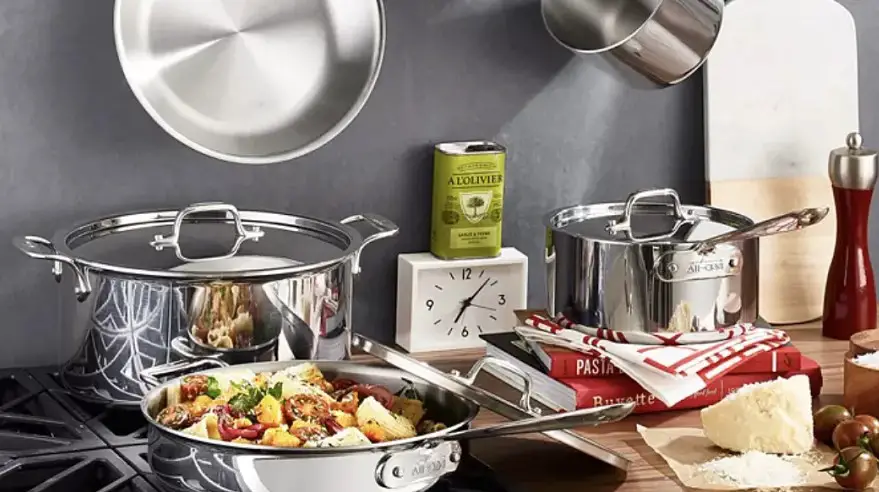
Brief summary
Let’s start with a brief overview of these two collections and a comparison between them.
Similarities
Composition – The hob of both collections is made of 18/10 stainless steel.
This ratio of chromium and nickel provides excellent rust resistance, high durability (so the cookware can withstand stress regardless of the period and frequency of use), stain resistance, ease of maintenance, and dishwasher safety.
The stainless steel exterior of both collections is made of 18/0 stainless steel. Unlike the 18/10 option, there is no nickel in this stainless steel.
It still provides durability and is safe to use on induction hobs. It’s also dishwasher safe, which means the whole thing can be tossed in the dishwasher. An aluminum kernel is glued between the layers of steel.
Bonded Design – All-Clad is known in the industry for its metal bonding technology, which has been used in its cookware for many years.
The design of all utensils is fully lined. This means that the aluminum kernel runs through the pan, not just at the base, as is the case with all disc bottom cookware.
Guarantee. All-Clad has always maintained the quality of its products, as they are virtually indestructible.
That is why so much talk about durability and advertise it. They are so confident in their products that buyers are offered a lifetime warranty with every purchase.
Thermals – both collections are designed for cooking performance on an induction hob. Plus, they can all withstand up to 600 degrees Fahrenheit in an oven or cauldron.
The stainless steel handles are made of heat-resistant material, which makes it easier to work with them during work.
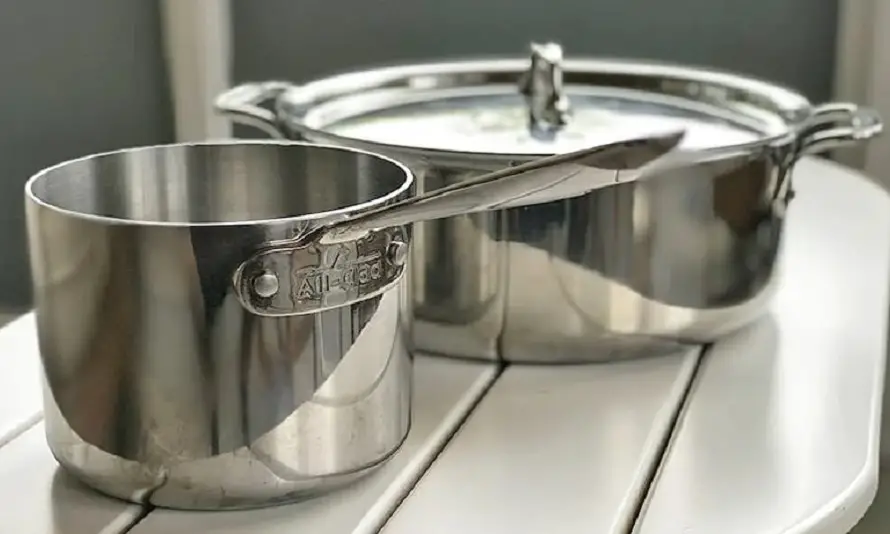
Differences between All-Clad D3 and D5
The number of bonded layers: The most significant distinction between All-Clad D3 and D5 cookware is their design.
D3 cookware has three bonded plies, which is why it is often referred to as All-Clad Tri-ply. Cookware D5 consists of five glued layers (5-layer construction). I will elaborate on why this is important.
Cooking performance: D3 cookware heats up faster and reacts faster to temperature changes. D5 cookware heats up more slowly, more evenly, and more gently, meaning you’re less likely to overcook or scorch food if you set the temperature too high.
Both have bell-bottomed edges to make it easier to place food on a plate or pour liquids into a bowl, but the edges of the D5 have a more pronounced sweep.
Since D3 cookware has fewer layers, it is slightly lighter and easier to handle.
Design: With D5 cookware, you can choose from a traditional polished (shiny) finish or a matte (matte/dull) finish.
D3 cookware is only available with a polished cooking performance surface. D5 cookware lid handles are thicker and feature an engraved All-Clad logo. D3 cookware lid handles are strong but thinner and do not feature the All-Clad logo.
Product variants: D3 cookware comes in two varieties: D3 stainless steel and D3 every day. The stainless steel D3 is their bestseller and comes in a variety of kits. The D3 every day features a larger cooking surface and round handles. D5 cookware is also available in two versions: D5 Brushed and D5 Polished (sets and single items).
Price: Both collections are expensive, but in general D3 cookware is cheaper than D5. Prices vary depending on the products you are comparing and the merchant you are shopping from.
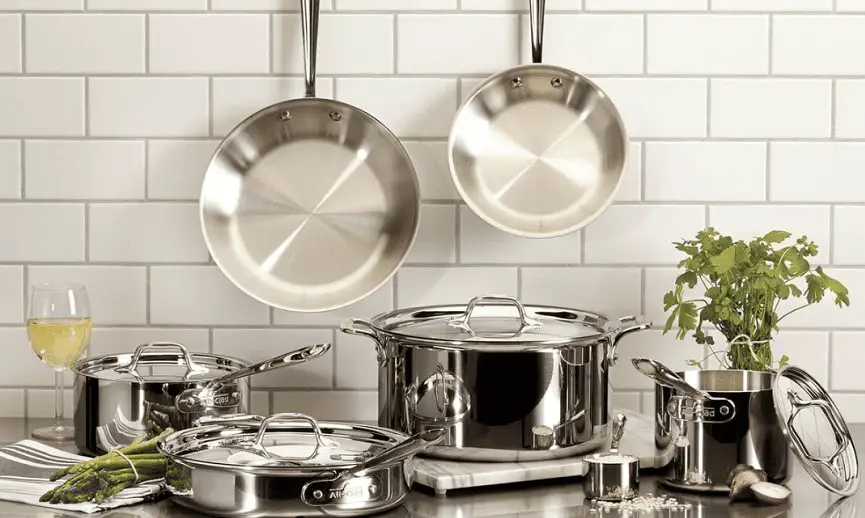
Comparison of culinary qualities: fully coated three-layer cookware and D5 cookware
All-Clad cookware is completely lined. With no abnormalities. Both All-Clad triply and D5 are created by cladding coatings of aluminum and stainless steel. This sticky structure is the industry norm. Why do they create their kitchen utensils this method, instead of simply driving them fully out of aluminum, stainless steel, or whatever material they notice appropriate?
You deserve the very best. Stainless steel is the most durable cookware material, but its thermal conductivity can be improved. Each material is used for its superior properties, complementing what it lacks. All aluminum pans heat up very quickly. But they would be weak, and there would be so many dents on them that their eyes would hurt.
Have you ever used aluminum foil? Well, it’s not the strongest aluminum you can get, but you can see how “flexible” it is. They call this “flexibility” malleability. Imagine that you are cooking eggs in an uneven pan. That’s why you need a flat cooking surface pan for cooking.
Stainless steel is strong but uneven. It will also take a long time to warm up. Aluminum and steel are on opposite sides of the thermal conductivity spectrum.
In 1967, John Ulam figured out that placing an aluminum layer between two layers of 18-10 textured stainless steel surface made the pan strong and heated quickly. It took the best of both materials.
All cladding has existed operating this cladding method for decades, and it is obvious that this is a fine, sticky building technology. The All-Clad and All-Clad D5 three-layer cookware collections feature durable stainless steel lids exterior and an aluminum core that quickly distributes heat to the food you’re cooking. None of the models has a copper core.
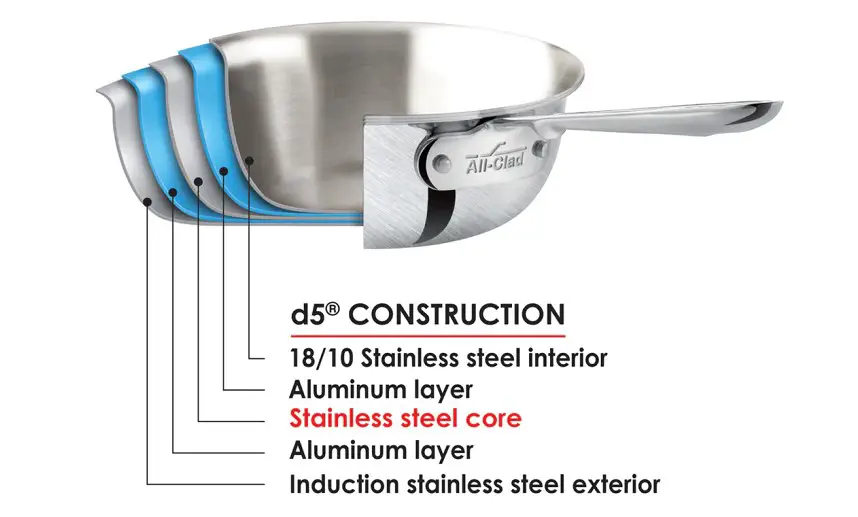
Design
In terms of aesthetics, there are several areas where the two collections differ.
First, it is the stainless steel exterior. Items from the All-Clad D3 collection always have a polished cooking surface, which is synonymous with most traditional stainless steel cookware. The D5 collection is available in either a matte finish or a polished finish, similar to the All-Clad D3 tableware.
Please note, however, that D5 cookware sets are only available with a polished cooking surface, so if you want a polished version, prepare to buy the items separately.
The next difference in design is the number of lugs on the rims. There is some level of flare variation in the two collections. Flaring is important as it gives users more control when trying to remove solids and liquids from dishes. Fewer or no flashes increase the likelihood of a disorder occurring.
Not all D3 modes have flared bezels, but those that don’t have a distinct flare. All D5 models have distinct flared edges to simplify the pouring process.
Finally, there is a difference between handles. Models in the D5 collection have thicker handles with more surface area than their D3 counterparts. In addition, the handles of the D5 cookware are engraved with the All-Clad logo, which is a distinct difference from the sleek, smooth handles of the D3 models.
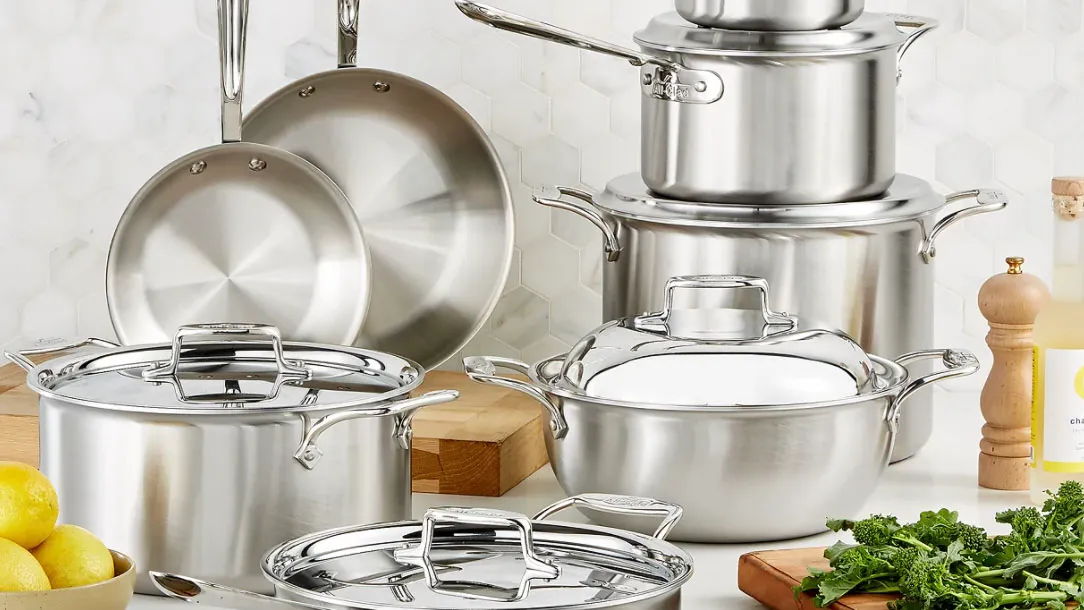
Prices
Products in the D5 line are on average 20% more expensive than those in the D3 line.
The positive effect of additional layers in D5 dishes
As for the impact of the two extra layers, let’s start on the positive side. The first positive impact to note is the added durability that layers provide. As I said earlier, the point of using stainless steel lids was to get the advantage of increased strength, while aluminum provides conductivity.
When you add an extra layer of steel, you only increase the strength factor, making the D5 collection even more indestructible than the almost impenetrable D3 collection.
We have already said that aluminum is an excellent conductor of heat. The single layer of fully clad aluminum is the main reason the D3 collection can dissipate heat so well. Although this heat allocation is slower in D5 models, by the time it is spread by the 2 layers of aluminum, your cookware is warming up nicely and evenly.
This means that the likelihood of unbalanced cooking due to hot spots is less of a concern for D5 cookware owners than for D3 cookware owners.
The third advantage is the more positive side of the D5 collection: a slower reaction to the supply and removal of heat. Because D5 blocks lose heat more slowly than D3 due to the extra layers, they can retain heat for their contents for longer periods when the heat is removed. This is great for when you want food to last longer and not get cold before eating.
Finally, the D5 collection gives you more margin for error. I know that sometimes we heat up too much when we cook, or we leave pots unattended for too long. While you still run the risk of scorching food in D5 cookware, the slower heat transfer means it takes longer to reach that point than in D3 cookware.
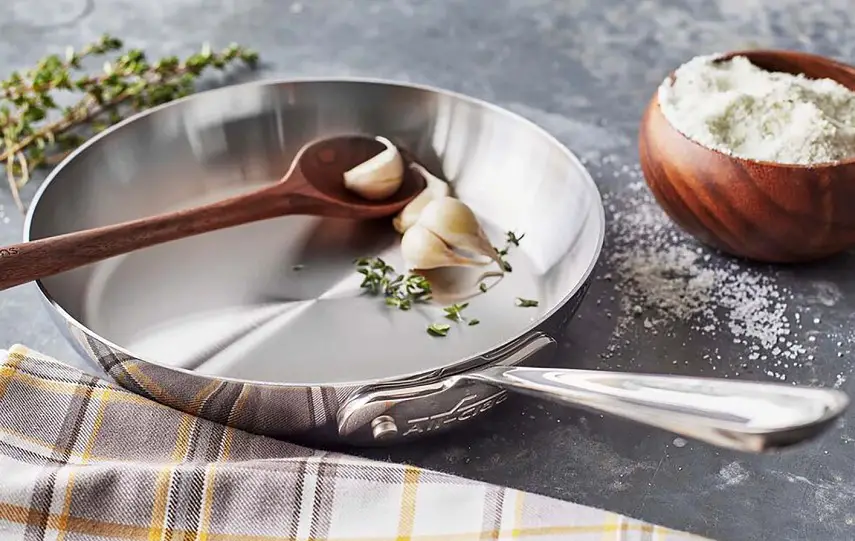
The negative effect of additional layers in D5 dishes
In addition to the positive effects of additional layers, there are also negative ones.
First, it is the weight of items from the D5 collection. As we all know, steel is not the easiest compound in the world. Two layers of steel with one layer of aluminum weigh less than three layers of steel with two layers of aluminum. It is easy to feel the difference when picking up the same items from the two collections.
The second problem with the D5 collection is the slower response to the temperature it offers. This is not to the point of causing huge problems, however, there are times when you need a faster heating process and in this sense, the D5 collection loses to the D3 collections.
Fully clothed D5
The D5 line is an improved version of the D3 cookware. As you might have guessed by now, D5 pots and pans have five bonded layers, not three.
The thin steel core of the D5 line consists of two layers of aluminum with a layer of stainless steel in the center. The hob and stainless steel exterior are made from the same stainless steel as the D3 range. This is a total of three layers of stainless steel and two layers of aluminum.
The extra layers and layout are designed to improve heat distribution. As heat moves from layer to layer, it is distributed from the center to the edge more evenly. While the D5 may heat up more evenly, it also takes longer to heat up and is slower to respond to temperature changes.
Along with the extra layers and benefits come additional costs. The D5 is the second most expensive offering from All-Clad, behind only the five-layer copper core line.
Fully dressed D3
All-Clad D3 is the company’s most affordable line of three-layer stainless steel cookware. When I say “most affordable”, it’s still more expensive than most of the competition. There are only a few individual items that you can buy for less than $100.
What you get for the high price is cookware with three layers of metal clad (bonded) together. Stainless steel inside and out, with a thick aluminum core extending from the base to the edge.
Stainless steel is low maintenance, durable and safe to use with all ingredients. The aluminum core increases conductivity, allowing the pan to quickly and evenly adjust to changes in temperature.
The D3 line has been tested in the most demanding home and professional kitchens around the world. Despite the high initial cost, this cookware will last a lifetime if handled properly.
Things to consider before buying stainless steel layered cookware
Layered or multi-layered: These terms are used interchangeably. Both of them refer to dishes made from layers of different metals. Ply means layers, so these terms essentially mean layered cookware.
You can also see the triple layer, which indicates that the cookware has 3 layers of metal. 5-layer means 5 layers and so on. Keep in mind that some cookware has layers only at the base, while other cookware has layers all over.
Full-Clad: Full-clad or Fully-clad means the cookware has layers all over the body, not just at the base.
Glued cookware: Cookware with glue construction has metal layers that have been glued together. All multilayer cookware has an adhesive construction.
Shatterproof: Shatterproof cookware generally refers to the cookware that has a metal disc attached to the bottom. Impact-resistant cookware is not as heat efficient as solid cookware, but it is more cost-effective.
Impact base vs. full shell
Completely closed dishes are made using the “sandwich” technology. It consists of several layers throughout the body.
The number of layers varies depending on the set of dishes. Three-layer is the most common and consists of three layers. Most often, the triple layer consists of two layers of stainless steel surrounding an aluminum core.
Aluminum has a high thermal conductivity, so it helps to heat dishes quickly and efficiently; however, aluminum cookware is very reactive and prone to warping. But this is not a problem with layered cookware, as stainless steel provides structural strength.
Stainless steel does not react, so it is safe for all kinds of food. Plus, stainless steel holds heat well, giving home cooks the best of both worlds.
In combination, aluminum and stainless steel provide excellent heat distribution.
You will also see the 5-layer, which is made up of five layers of metal. Usually, it is stainless steel and aluminum. Five-layer cookware may also have a copper core.
Impact-resistant cookware has a thick layer of aluminum or copper that sits on the bottom of the cookware.
This extra layer helps the bottom of the pan heat up faster.
While both methods transfer heat efficiently, a fully lined design is optimal because the aluminum core transfers heat throughout the cookware. This results in more uniform heating.
Fully lined cookware is more expensive than impact-resistant cookware. All-Clad cookware is fully lined, a major factor in its excellent reputation and premium price.
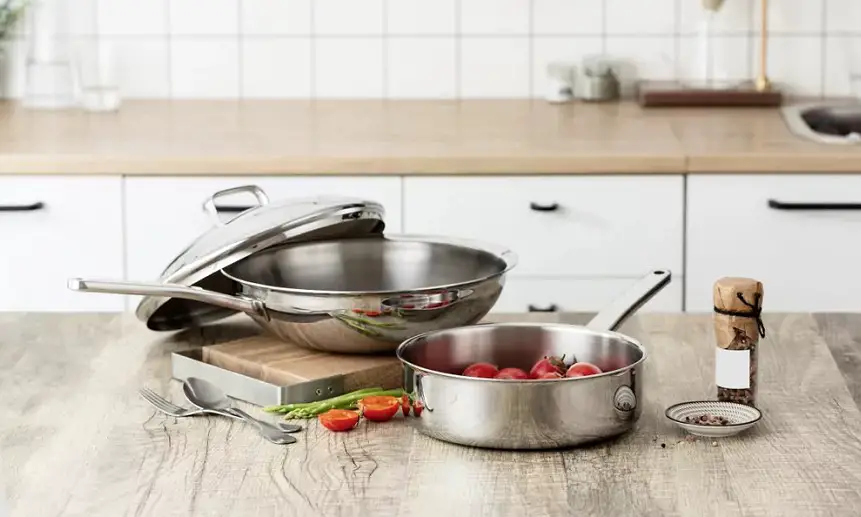
How to use multilayer stainless steel cookware?
There is no point in spending money on All-Clad cookware if you don’t know how to use it properly.
And the lifetime warranty that All-Clad offers? It does not cover misuse, so it is extremely important to know how to use this cookware. Follow these simple steps to get the most out of your layered cookware:
- Stainless steel cookware MUST be preheated. Adding food or oil to a cold stainless steel cooking surface will cause severe burns. To check if the pan is hot enough, add a drop of water to it. If the water rolls in drops and hisses? You may go.The reason for this is that stainless steel has tiny pores. When it’s cold, these pores draw in oil and food. When it’s hot, these pores close and allow the oil to coat the pan without being absorbed, which means food comes out more easily.
- Stick to a low or medium temperature. When heated, food sticks. The stainless steel hob retains heat, so if you preheat the cookware, it will stay hot while the food cooks.
- Add oil first. A stainless steel cooking surface will not release food easily like a non-stick surface, so you may want to use cooking oil. Avoid non-stick sprays.Be sure to add oil before adding food. Dropping them together will worsen adhesion. Let the oil heat up for a minute and then add the food. This will give you the best results.
- Avoid metal utensils. While stainless steel does better on metal than non-stick, it can still scratch. Careful use of a metal spatula to remove food may not damage the pan, but a metal fork may well.Also? Using metal tools will void your warranty, so why take the risk? Wooden or heat-resistant silicone utensils work best.
How to clean multilayer cookware?
Cleaning is one of the biggest consumer complaints about stainless steel pots and pans. But with a few simple tips, you can make cleaning up burnt toast a piece of cake.
- Be sure to cook properly in stainless steel multilayer cookware. If you don’t know how to do this, please see the section above. Proper use is the BEST way to make cleaning easier.
- Wash manually some sets are advertised as being dishwasher safe, but I wouldn’t go that route.
- There are too many ways to damage a pan, from harsh detergents to high heat and contact with other objects. Handwashing is best.
- In case of sticky food, let the pan soak. 15 minutes should work. Use a plastic scraper or scraper to remove food debris.
- Remove stains and/or polish with Bar Keeper’s Friend. Several customers have recommended using this product to clean polished cookware to a beautiful sheen.
- If you prefer not to use cleaners such as Bar Keeper’s Friend, you can polish the cooking surface naturally with vinegar and remove stains by boiling a mixture of baking soda and water.
- If you leave a wet stainless steel pan to dry, it will leave stubborn stains.
FAQ
Why is All-Clad D5 being discontinued?
Every manufactured All-Clad cookware, particularly those in the discontinued D3, D5, and LTD stainless steel collections, has a “general defect” that can cause the second aluminum layer of the products to peel off.
Is D3 better than D5?
Regarding performance, D5 cookware heats up more slowly and retains heat longer than D3 cookware. It’s also more forgiving and less sensitive to temperature changes, so you’re less likely to overcook or burn your food if you accidentally turn the stove on too hard.
How can you tell the difference between All-Clad D3 and D5?
The key difference between All-Clad D3 and D5 is that D3 has 3 bonded layers (steel, aluminum, steel) while D5 has 5 (steel, aluminum, steel, aluminum, steel). The D3 heats up faster and is more responsive, while the D5 heats up more evenly and more gently. Because of the extra layers, D5 is more expensive.
Why is All-Clad D5 so expensive?
Each D5 pan is built around a solid core of aluminum, stainless steel, or copper that extends to the edge, otherwise known as a three-layer, fully lined cookware. It is because of the solid construction that this cookware is so expensive.
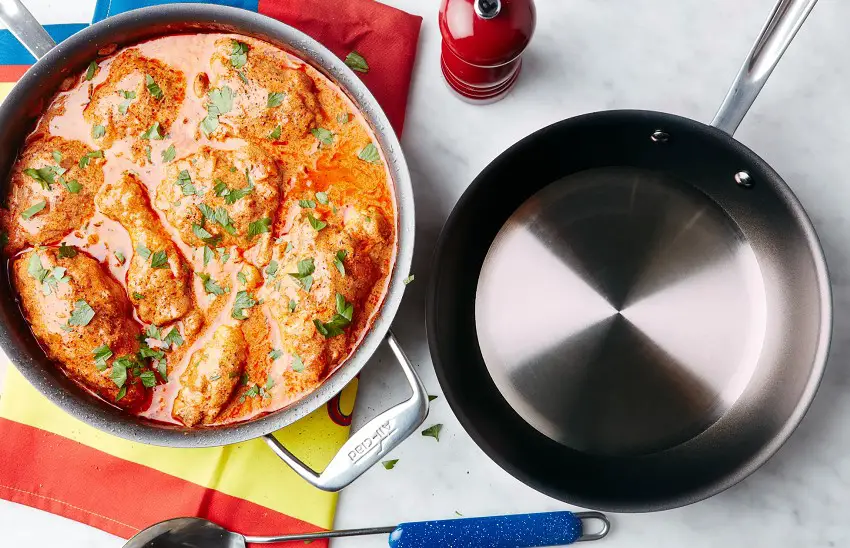
Conclusion All-Clad D3 vs. D5
The thing is, both the All-Clad D3 vs. D5 are great choices. Selecting the proper tableware depends on efficiency, innovation, and cost, and it’s up to you to determine which aspects are multiple critical.
Regarding productivity, D5 cookware warms up additional slow and has warmth longer than All-Clad D3 tableware. It’s also more forgiving and less sensitive to temperature changes, so you’re negligibly possible to overcook or scorch your meals if you accidentally shift the stove on too difficult.
If you’re the kind who desires exact monitoring over cookery, choose the D3. If you multitask in the cuisine and don’t have the tolerance to twirl over the stove, you might want to consider the D5.
While the design doesn’t affect performance, it’s important to choose cookware that you enjoy looking at and displaying to guests, especially since that cookware will last you for decades.
Though D5 tableware has more extensive cover handles and better apparent pouring edges, the fundamental distinction in styling between D3 and D5 cookware is in appearance. If you like a matte look, D5 is your only choice. If you like the polish, you can choose any of these, but be aware that there are only a few D5 polished kits to select from.
The final but not minor is the cost. Both are relatively pricey, but you obtain what you disburse for. If you’re on a budget, the D3 is cheaper and offers more opportunities. But, as I said, in some circumstances the price difference is only about 10%.
If you’re looking for a push-in-one route, I positively suggest D3 cookware. This is an All-Clad bestseller for a reason. It heats up quickly and evenly, has a classic and luxurious lustrous trim, and your variants for kit and unique details are virtually endless.

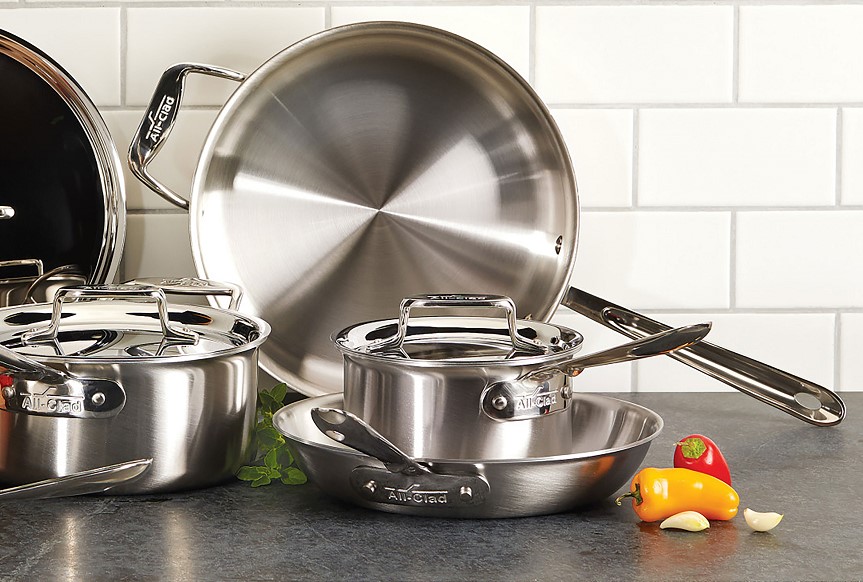
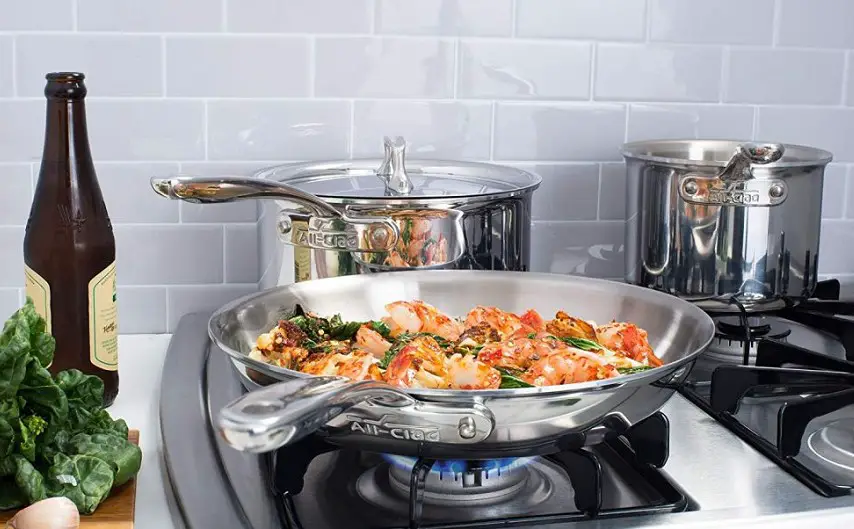
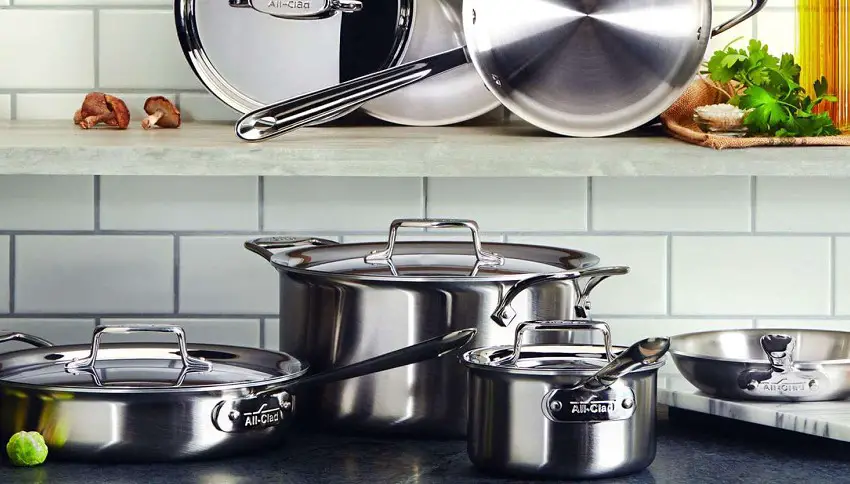
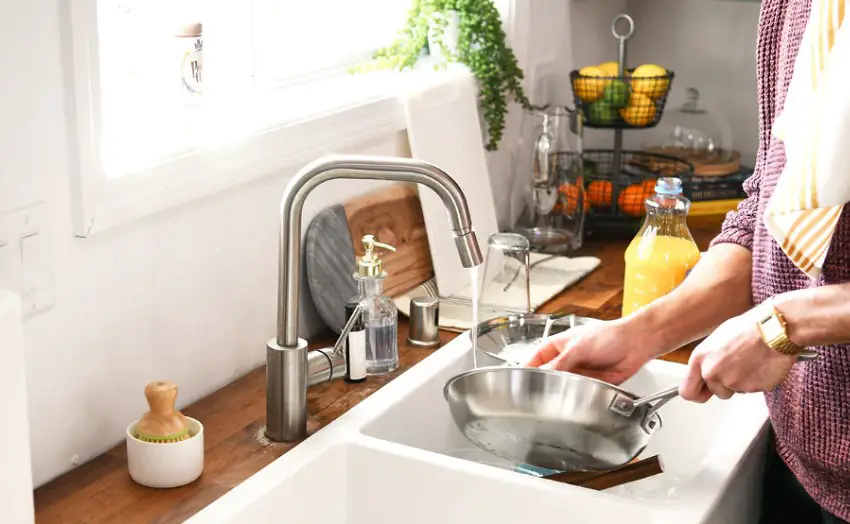
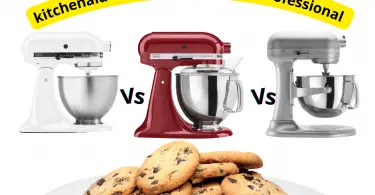
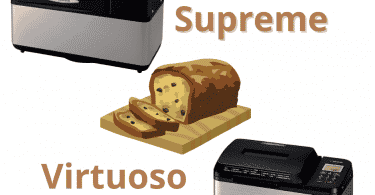
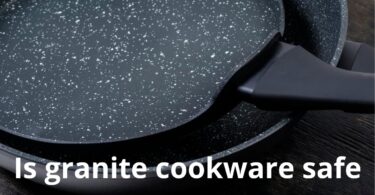
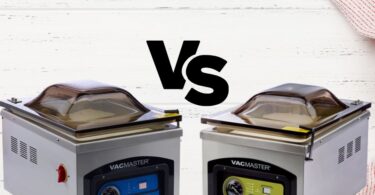
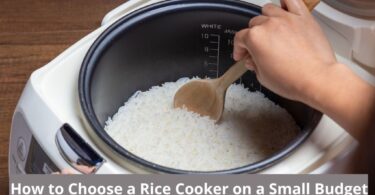
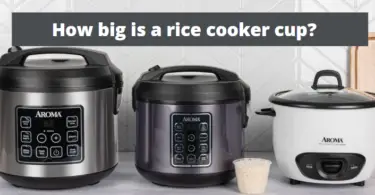
Leave a Comment